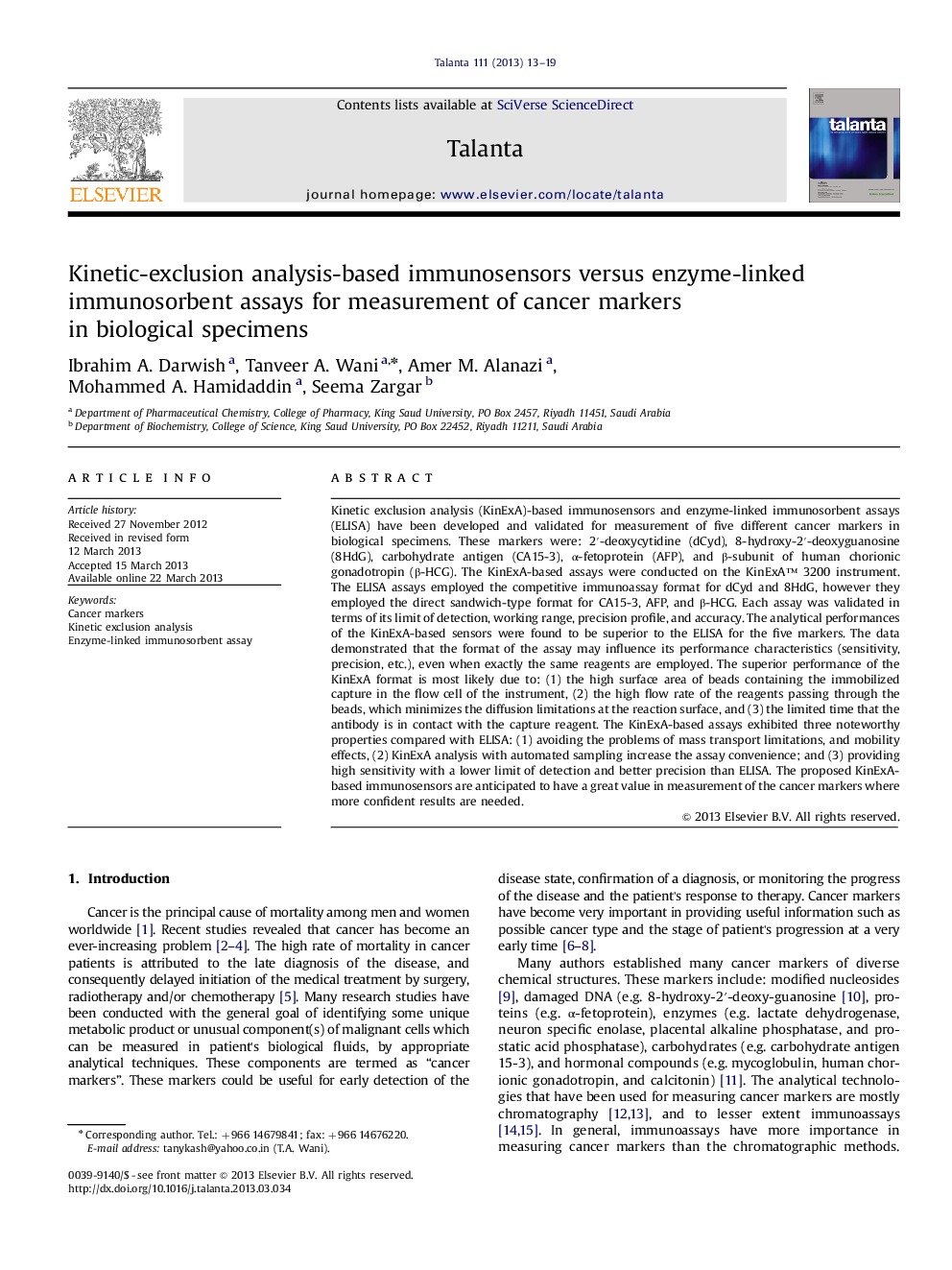| Article ID | Journal | Published Year | Pages | File Type |
|---|---|---|---|---|
| 7682289 | Talanta | 2013 | 7 Pages |
Abstract
Kinetic exclusion analysis (KinExA)-based immunosensors and enzyme-linked immunosorbent assays (ELISA) have been developed and validated for measurement of five different cancer markers in biological specimens. These markers were: 2â²-deoxycytidine (dCyd), 8-hydroxy-2â²-deoxyguanosine (8HdG), carbohydrate antigen (CA15-3), α-fetoprotein (AFP), and β-subunit of human chorionic gonadotropin (β-HCG). The KinExA-based assays were conducted on the KinExA⢠3200 instrument. The ELISA assays employed the competitive immunoassay format for dCyd and 8HdG, however they employed the direct sandwich-type format for CA15-3, AFP, and β-HCG. Each assay was validated in terms of its limit of detection, working range, precision profile, and accuracy. The analytical performances of the KinExA-based sensors were found to be superior to the ELISA for the five markers. The data demonstrated that the format of the assay may influence its performance characteristics (sensitivity, precision, etc.), even when exactly the same reagents are employed. The superior performance of the KinExA format is most likely due to: (1) the high surface area of beads containing the immobilized capture in the flow cell of the instrument, (2) the high flow rate of the reagents passing through the beads, which minimizes the diffusion limitations at the reaction surface, and (3) the limited time that the antibody is in contact with the capture reagent. The KinExA-based assays exhibited three noteworthy properties compared with ELISA: (1) avoiding the problems of mass transport limitations, and mobility effects, (2) KinExA analysis with automated sampling increase the assay convenience; and (3) providing high sensitivity with a lower limit of detection and better precision than ELISA. The proposed KinExA-based immunosensors are anticipated to have a great value in measurement of the cancer markers where more confident results are needed.
Related Topics
Physical Sciences and Engineering
Chemistry
Analytical Chemistry
Authors
Ibrahim A. Darwish, Tanveer A. Wani, Amer M. Alanazi, Mohammed A. Hamidaddin, Seema Zargar,
